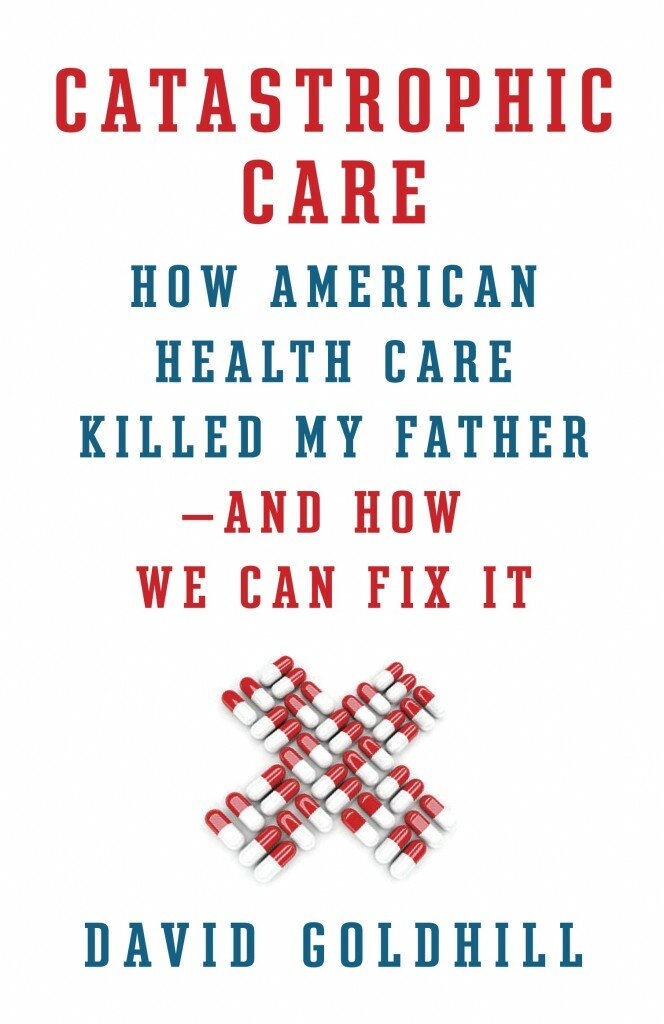 Reading only the jacket and full title of David Goldhill’s latest book, “Catastrophic Care: How American Health Care Killed My Father—and How We Can Fix It” you might expect an indictment of providers—doctors and hospitals. After all, it’s widely acknowledged that our health care system has grown costly and inefficient, and often ineffective. What you’ll find instead is an excellent analysis of how the changing role of insurance from a true hedge against unforeseen emergencies to a system of intermediary payers for virtually all medical services. This evolution has negatively affected the essential players in healthcare: patients and providers.
Reading only the jacket and full title of David Goldhill’s latest book, “Catastrophic Care: How American Health Care Killed My Father—and How We Can Fix It” you might expect an indictment of providers—doctors and hospitals. After all, it’s widely acknowledged that our health care system has grown costly and inefficient, and often ineffective. What you’ll find instead is an excellent analysis of how the changing role of insurance from a true hedge against unforeseen emergencies to a system of intermediary payers for virtually all medical services. This evolution has negatively affected the essential players in healthcare: patients and providers.
While most of the references in other editions of The Dirt are to medical, scientific, or academic experts, Goldhill is none of those. He is the CEO of GSN (Game Show Network), whose father contracted fatal healthcare-acquired infections while being treated for pneumonia. Perhaps as a result of that experience, Goldhill has written a well-researched book that defines the problems with our current system, explains the evolution that has caused or enabled those shortcomings, and provides a comprehensive vision of a better system of healthcare.
Goldhill posits that everything about healthcare is treated differently than any other industry: from the payment system to measures of effectiveness, and acceptance of poor performance. Goldhill refers to this as the “Island of Health Care” where everything is treated differently than on the ‘Mainland’ of consumer economics.
The author believes that as insurance has become a payment system, patients have forfeited their position as consumers, and thus, prevented real market forces from affecting quality, costs and safety. Insurance companies, not patients, are the true customers of health care providers. The system perpetuates the illusion that someone else is paying for your health care. Incomprehensible billing only makes it worse, making it harder for patients to evaluate, much less compare, service costs.
So if the lack of consumer influence is at the heart of how we got into this mess, it follows that the recommended solution lies in restoring the true consumer role of all patients. Goldhill defines the characteristics of a robust health care system: security against catastrophy, availability of treatment for all, and simplicity. He proposes a plan that combines national insurance and market forces. His proposal is comprised of 1) cradle-to-grave catastrophic health insurance (low premiums, high deductibles), 2) mandatory health savings accounts(HSAs), and 3) health loans against future contributions to the HSAs to cover expensive, but not catastrophic, illness.
Here’s why we’re recommending that you read this book: Transitioning to the truly consumer-driven solutions that Goldhill offers will require overcoming resistance and obstacles of entrenched interests, as well as societal and cultural changes in patient behavior and discipline. Such change won’t be easy and it won’t be quick. If you follow this blog, it’s obvious that you have an interest in the future of health care, and it’s incumbent on those of us with that interest to spur discussions and promote workable solutions. Catastrophic Care may not be your typical summer beach read, but in our opinion, well worth the time.
PurThreadTM Technologies Inc. is dedicated to developing proprietary antimicrobial textile technology. Our patent-pending, integration technology and fiber formulations incorporate an EPA-registered antimicrobial additive into every fiber and yarn to protect the fabric from degradation. Learn more about our antimicrobial textile technology.
PurThread also makes a range of freshness products for other markets such as the military, emergency first responders and performance athletic wear in which our next-generation technology and fiber formulations expand the high performance options available to protect fabrics from odor, mold and mildew causing bacteria.